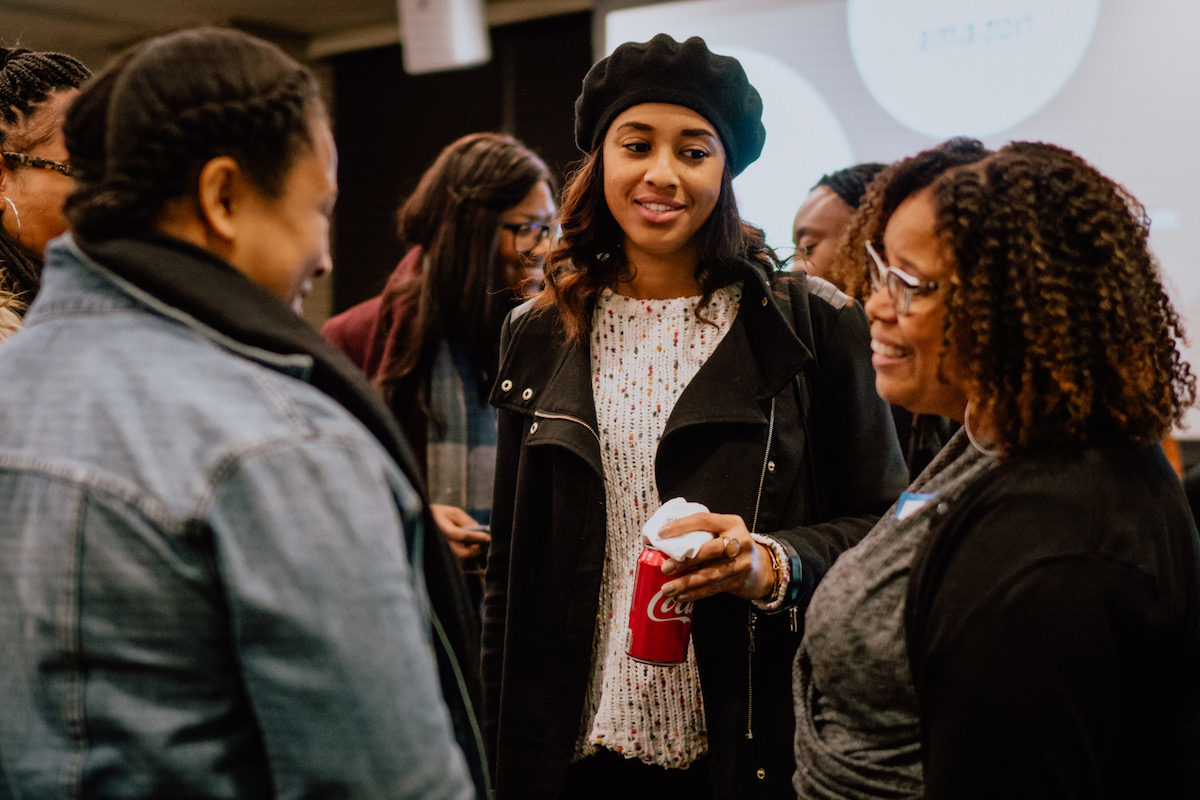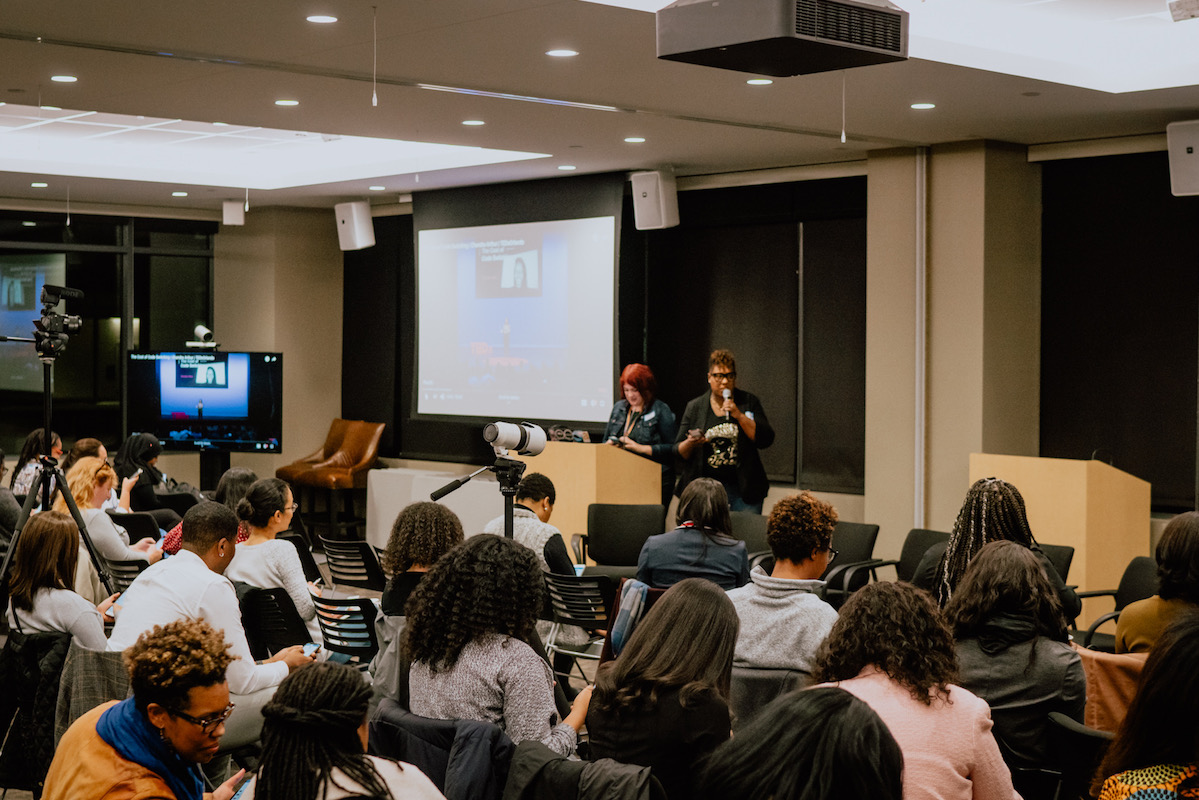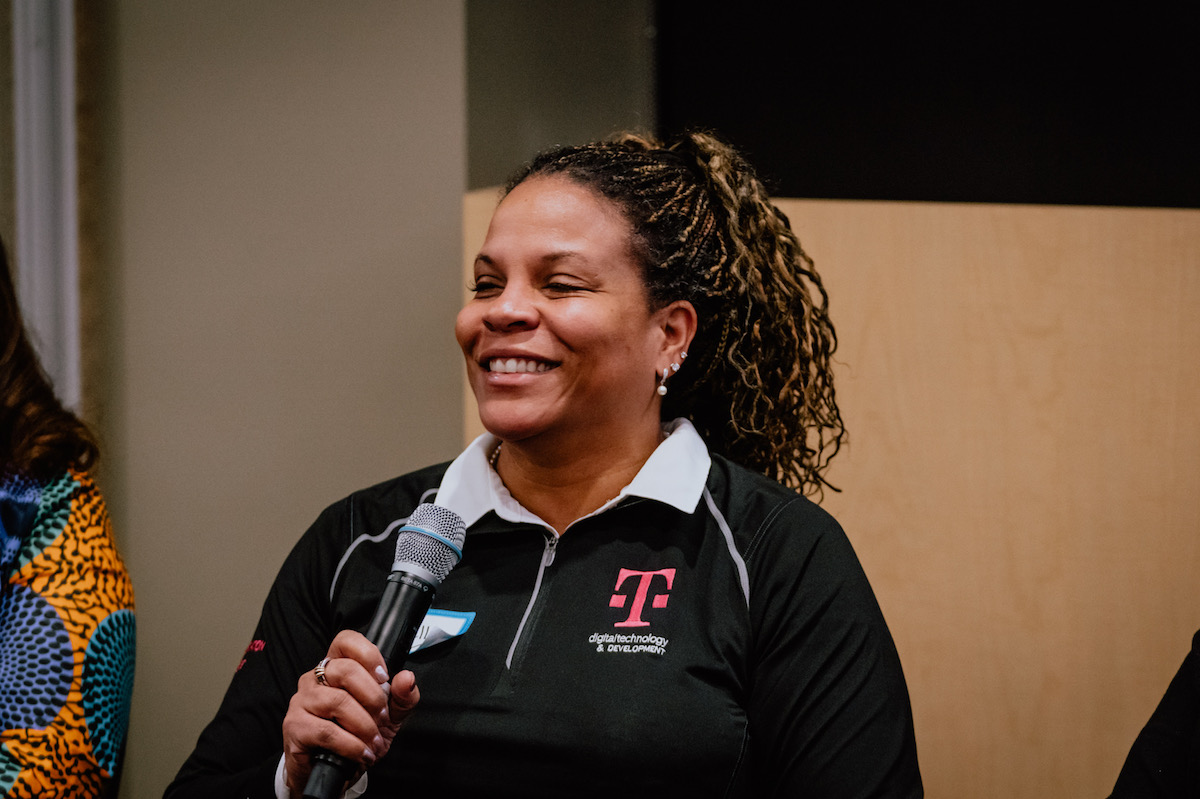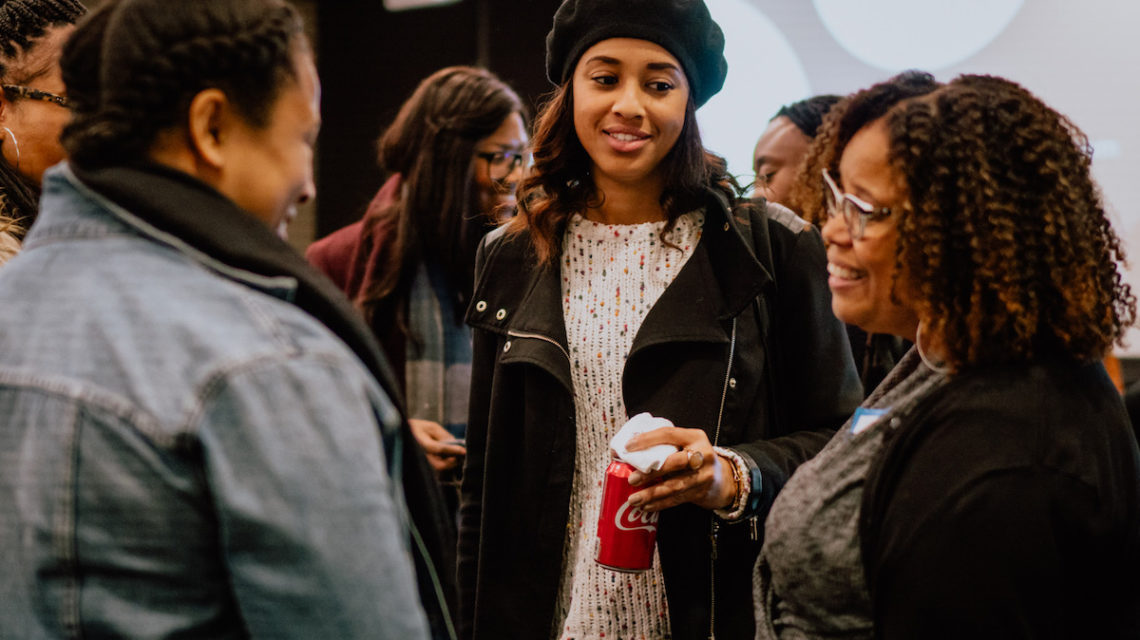By Diya Khanna
Have you ever pretended to like golf? What about changing how you dress or what you eat? Maybe you’ve adjusted the tone of your voice or the texture of your hair. Do you speak a certain way at home that you would never speak at work?
If so, you could be code-switching.
The Seattle-based organization Black Women in STEM 2.0 hosted a discussion called “Code Switching or Soul Switching” at Amazon earlier this year.
The six women panelists discussed what the role of code-switching has been in their careers — and how the practice gives away one’s soul.

The term was originally coined in the 1960s to describe how multilingual people switch between languages in one conversation. Today some use the term to describe how people in minority groups adopt speech and behavior to access both capital and spaces and protect oneself against stereotypes and other more severe forms of discrimination.
You might have seen code-switching in films like ”Sorry to Bother You.” Politicians and public figures do it too. In her book “Becoming,” former First Lady Michelle Obama shared her experiences navigating between different social situations. Congresswoman Alexandria Ocasio-Cortez switched her manner of speech at Reverend Al Sharpton’s National Action Network event, sparking debate as to whether she was adopting “verbal blackface” or if she was “code-switching.”
On the one hand, code-switching makes us adaptable and can be a valuable skill as we go through life. Panelists said they picked up the skill through childhood as a way to fit in. By the time they were adults, many had become experts at switching between different realities.
“Code-switching can be functional until it is not,” said panelist Dr. Alisha Moreland-Capuia, assistant professor at OHSU School of Medicine.
Seattle speech pathologist Julie Washington told The Atlantic in 2018 that schools should respect African-American English. She says teaching children how to switch between dialects would play a part in closing the black-white literacy gap. Readers responded by saying code-switching goes beyond linguistics to the social, historical and economic factors driving the behavior.
Whether for good or bad, code-switching is something people of color do — from job interviews to client meetings. And because dominant culture is white, how we navigate our way through the institutions is a conversation that is particularly relevant to those at the margins.

Aiko Bethea, head of Diversity and Inclusion at Fred Hutchinson Cancer Research Center said it’s worth resisting the impulse.
“There is something about standing in your truth regardless of what dominant culture is pushing you against the wall and suffocating you to do,” she said.
Panelists gave advice on how to do this:
- Know your values. There will be situations that leave you wondering how you should react. Seeking clarity on what you value can help you guide your actions.
- Be intentional. Know where you’re code-switching. If you have regrets, it’s good to question why. Above all know your boundaries. “It’s all about finding your authentic self and making sure you stay true to that,” said Shelly Woodruff, senior director of Product and Technology at T-Mobile.
- Build pathways for next generations. It is essential to recognize the responsibility we have to create a path for others behind us. “Lift while you climb,” said Heather Ratcliff, director of Product and Technology at T-Mobile.

All panelists spoke about using their power to empower.
“When you’re in leadership, own it,” said Deena Pierott, founder of iUrban Teen, a STEM+ Arts education program that brings together underrepresented teens and young adults.
This is why we must talk about code-switching and the conditions under which they occur. National Public Radio does just that, covering race, ethnicity and culture in its podcast about race and ethnicity, Code Switch.
As more and more companies commit to diversity and inclusion initiatives, engaging in conversations about identity should continue to be a critical part of the process. A running theme among the speakers at the Black Women in STEM 2.0 event was that talking about code-switching can help us understand that we are not alone in our struggles and that together, we can collectively challenge the pressure of conforming to a dominant culture.
“You have to see yourself as being equal and belonging in that space,” said Marie Stuppard, client service lead at Slalom Consulting.
It’s important to know ourselves and our stories and to co-create energy in any room we’re in. Because ultimately, code-switching means we lose out on the opportunity to truly learn about one another in authentic ways.

.
Diya Khanna is a Diversity and Inclusion Strategist with projects in Seattle, Toronto and Berlin
.
.










